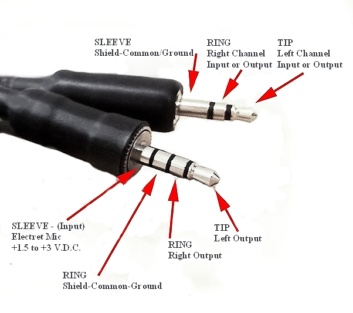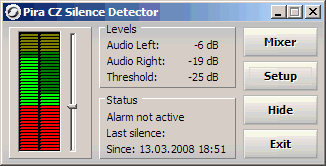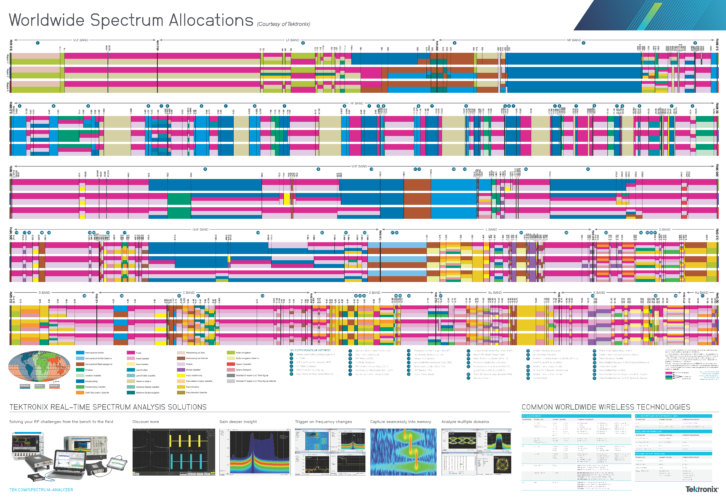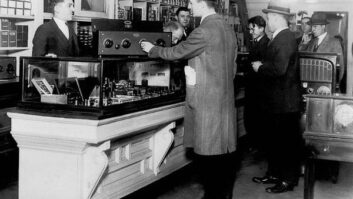
Consultant Frank Hertel of Newman-Kees RF Measurement needed to create a special audio interface recently.
He said he was not aware of a protocol for wiring Tip-Ring-Ring-Sleeve connectors, which are prevalent on laptop computers with only one audio jack.
The first image shows the difference between the typical Tip-Ring-Sleeve, with which most readers are familiar, and Tip-Ring-Ring-Sleeve connectors.
What surprised Frank was that the positive voltage for powering the electret mic is on the Sleeve of the Tip-Ring-Sleeve-Sleeve connector, and the Shield/Common/Ground connection for the electret mic and left and right outputs for the headphones are on one of the Ring connections, the one closest to the Sleeve (which, remember, is the positive voltage for powering the electret mic).
Therefore, if you want to connect any audio source other than the electret mic, you will need to add a DC blocking capacitor between the Sleeve and the hot phase wire of your external audio source (since that source does not require a DC voltage).
The hot signal wire from that source connects to the Sleeve of the Tip-Ring-Ring-Sleeve connector, through the blocking capacitor.
Frank said with a laugh that the protocol seems so foreign to the common one we used for years, in which the Sleeve is the connection for the Shield/Common/Ground. He suspects someone had a hangover when they decided to come up with this one.
He adds this note: When connecting an external audio source via the DC blocking capacitor, you may need to attach a resistor between the Sleeve (input) and the Ring (Shield/Common/Ground). If some current doesn’t flow between these connections, the computer’s input may not be activated. If you find that a resistor is required, a 2.2 K-ohm should do the job.
Computers vary. The best approach may be to add a 10 MFD DC blocking capacitor in series with the high lead of the external audio device, as well as the 2.2 K-ohm resistor connected across the Sleeve and the Ring terminals.
What is your experience? Email your thoughts to [email protected].
Stop the sound of silence
Contract and projects engineer Dan Slentz enjoys sharing clever, inexpensive ways of doing things.
 He told us about a freeware silence sensor from Pira.cz. The software monitors the presence of an audio signal on a stereo program line or PC soundcard. When no signal is present for a specified time, pre-defined solutions activate.
He told us about a freeware silence sensor from Pira.cz. The software monitors the presence of an audio signal on a stereo program line or PC soundcard. When no signal is present for a specified time, pre-defined solutions activate.
This is useful for monitoring an STL feed or hard-drive playout system where continuous audio is required. If the audio drops below your chosen threshold, the Pira.cz Silence Detector will switch to a backup and notify you with an email alert.
Next, with COVID easing, you may see guests returning to your studios. If so, you know the importance of a “cough switch” on each microphone.
Dan found a compact, reasonably priced aluminum box that permits the user to toggle the mic on and off, so the box has dual usage — for the “Voice of God” in a stage manager’s TV studio setting, or a momentary mute cough switch for individual mics in an interview studio. Built for the pro audio industry, it is from AudioMan Products. At audiomanproducts.com, scroll down to “Push to Talk Ver. 2.”
Dan says the muting of the mic is quiet — no pops or clicks when the mute button is depressed. Plus, construction is solid, and it’s built with Neutrik XLR connectors.
The AudioMan Push to Talk Ver. 2 will work with dynamic or phantom-powered condenser microphones wired with balanced three-pin connectors. I’ve saved the best part for last: Push to Talk Ver. 2 is just $59, and quantity discounts are available.
An ideal addition to any talk/interview studio.
What’s the frequency, Workbench?
Finally, Tektronix is offering a free download of its colorful Worldwide Spectrum Allocations poster. We thank Brad Ohdner of Tektronix for sharing this resource with Workbench readers.

John Bisset, CPBE, has more than 50 years of broadcast experience and is in his 31st year at the Radio World Workbench. He handles western U.S. radio sales for the Telos Alliance and is a past recipient of the SBE’s Educator of the Year Award.
Workbench submissions are encouraged and qualify for SBE recertification credit. Email [email protected].












